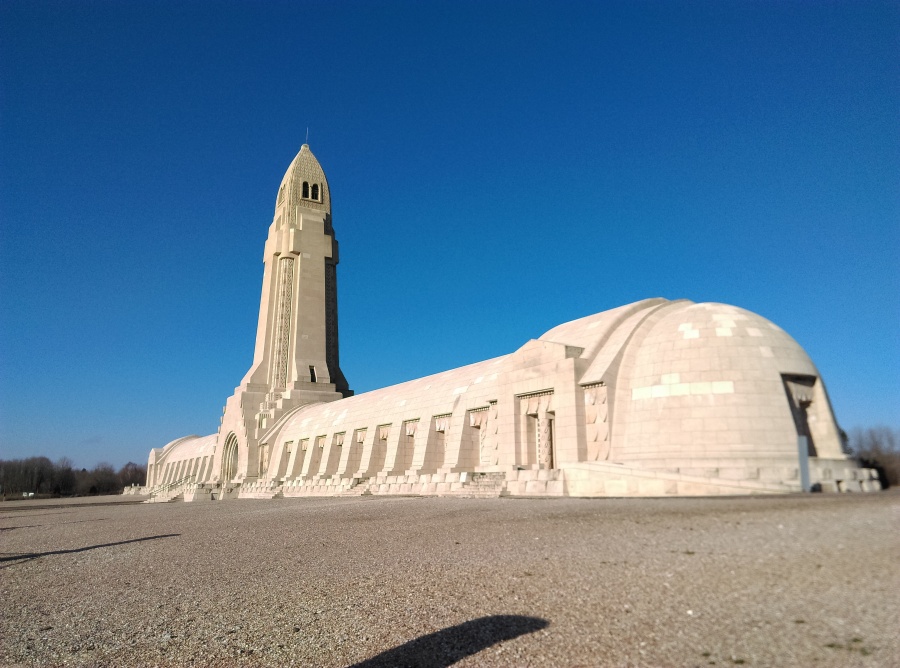17 March 2018 – there is still a lot of debris at Verdun from the battle. Unexploded shells are painted orange and taken to collection points, then removed and destroyed. There are many pieces of bent and punctured metal, twisted screw pickets, barbed wire – and I even saw the remains of a gun.


8 March 2018 – I had five days’ walking on the old Verdun battlefield. The weather was very appropriate as it was well below freezing most of the time, with some snow, just like in February and March 1916. It really brought home how miserable it was for the men on both sides, living in the open with no hot food or drink for days, mostly with no shelter, and without the benefit of modern clothing.
One German officer commented that it was difficult to persuade his men to take cover in shell-holes full of freezing water. Another was delighted when his company commander sent him coffee – but it was frozen solid. He was highly annoyed and threw it against a tree, where it shattered.


4 March 2018 – just come back from a week at Verdun, paying my respects to the brave men who fought there and especially to those who never left. The battle of 1916 was known as “Hell” on both sides: die Hölle von Verdun or l’Enfer de Verdun. Both French and Germans saw over the road to the battlefield the sign at the entrance to Dante’s Inferno: “Abandon all hope ye who enter”. Incessant shelling turned the battlefield into a wasteland of mud and craters, the sites of woods marked only by splintered trees. In this desolate landscape of utter devastation men killed and tried to stay alive.
The battle continued for 300 days and nights. The Germans pushed forward a few kilometres and the French pushed them most of the way back again. No one knows how many men died, but the estimate is 300,000, or about 1,000 every day. The Douaumont Ossuary contains the bones of about 130,000 unidentified French and German soldiers.

21 February 1916 – the ground trembled to the German bombardment at Verdun. A huge naval gun, Long Max, shelled the city itself, but the main impact fell on the French front line. Between 7:15 and 5 pm (German time) guns of every calibre fired 1 million shells to smash the French positions with the intention of killing or disabling everyone there. The German soldiers had a grandstand view as they waited to go in: shells roared and whistled overhead incessantly, some could even be seen as they paused at the top of their trajectory. The results opposite were impressive as huge columns of smoke and earth rose into the air, containing branches and whole trees, barbed wire, and bodies. It was, said one, the symphony of the Devil.
The main assault was scheduled for the following morning, with only officers’ patrols going in at 5 pm on 21 February . They found that the bombardment had had limited effect, and many Frenchmen were very much alive. In some parts of the Front there was little resistance, but the men of the elite Brandenburg Corps found themselves in the killing ground of Herbebois…

Just come back from the beautiful Uckermark region of Brandenburg – where Karl von Leussow’s family estate was… I like to go to places where my characters lived or where they fought.


